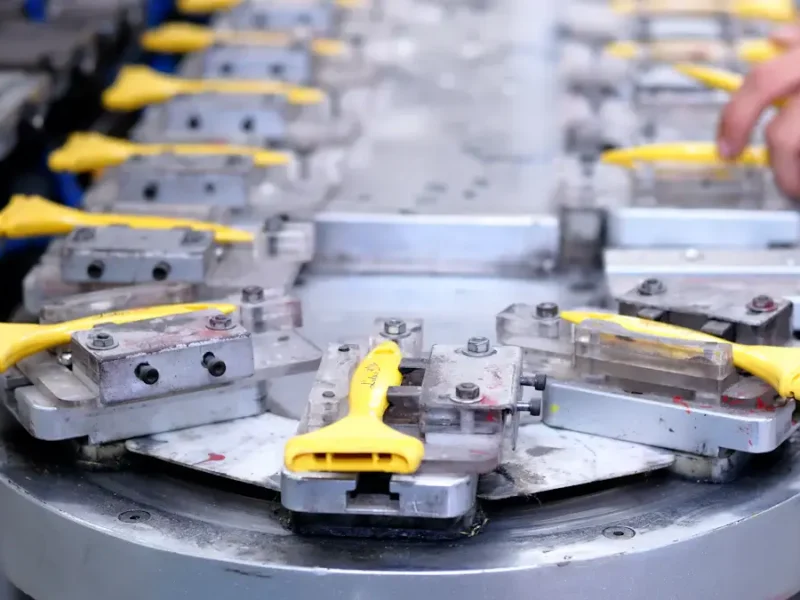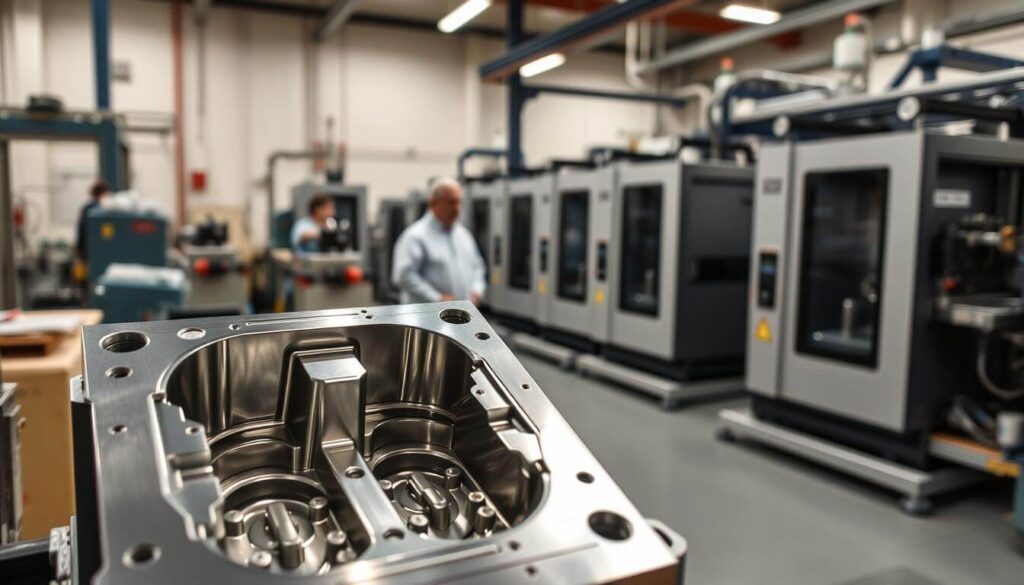
In precision injection molding, designing the draft angle correctly is essential for ensuring smooth part ejection, reducing defects, and extending mold life. A well-planned draft angle minimizes friction between the molded part and the core/cavity, preventing damage to both the product and the mold. In this guide, we will explore how to determine the appropriate draft angle for precision injection molding and key considerations to achieve optimal mold performance.
What Is a Draft Angle in Precision Injection Molding?
A draft angle is a slight taper applied to vertical walls of a molded part to facilitate easy ejection from the mold. Without an appropriate draft, the part may stick to the core or cavity, leading to scratches, warpage, or even mold damage. Draft angles help reduce ejection force, improve surface finish, and enhance overall production efficiency. Proper draft angle design also contributes to better cycle times and increased productivity in precision injection molding.
Importance of Draft Angles in Precision Injection Molding
Precision injection molding requires highly accurate and consistent parts. Even small errors in draft angle design can lead to:
- Increased ejection force, causing defects or part damage.
- Mold wear and tear, reducing tool lifespan.
- Poor surface finish due to friction.
- Higher production costs due to rejected parts and extended cycle times.
- Production delays due to difficulty in part release.
To achieve superior product quality, draft angles must be carefully calculated based on material properties, Parte de geometría, and mold design.
How to Determine the Right Draft Angle?
1. Consider Material Properties in Precision Injection Molding
Different plastics shrink at varying rates, affecting how they interact with the mold surface. Below are typical draft angle recommendations for common injection molding materials:
- ABS: 0.5° to 1.5° per side
- policarbonato (ordenador personal): 1° to 2° per side
- polipropileno (PÁGINAS): 1.5° to 2.5° per side
- Nylon (PA): 0.5° to 1.5° per side
- Polietileno (educación física): 1° to 3° per side
- Acrylic (PMMA): 0.5° to 1° per side
2. Evaluate Part Geometry for Draft Angle Optimization
Complex parts with deep cores or textured surfaces require larger draft angles to ensure smooth ejection. General guidelines include:
- Smooth surfaces: 0.5° to 1°
- Lightly textured surfaces: 1° to 3°
- Heavily textured surfaces: 3° to 5°
- Deep cores or tall vertical walls: 1.5° to 3°
3. Consider Mold Design Factors in Precision Injection Molding
- Core and Cavity Design: Internal features like ribs, bosses, or undercuts may require additional draft.
- Ejection System: Proper ejection pins and mechanisms should be integrated to avoid excessive force on the part.
- Parting Line Position: Placing the parting line strategically can help optimize draft angles for improved mold release.
- Wall Thickness: Consistent espesor de la pared helps in uniform cooling and prevents part distortion, which can impact draft requirements.
Common Mistakes in Draft Angle Design for Precision Injection Molding
1. Insufficient Draft Angle
A common issue is failing to provide enough draft angle, leading to stuck parts, increased ejection force, and surface damage. Engineers should always consider the material y part complexity when setting draft angles.
2. Excessive Draft Angle
While draft angles are necessary, too much taper can alter the intended design and affect how the parts fit together. Designers must find a balance between functionality y manufacturability.
3. Ignoring Textured Surfaces
Textured surfaces require greater draft angles to avoid surface defects. Failure to account for this may result in scuffing or pulling of the molded part during ejection.
4. Not Considering Mold Shrinkage
Different materials shrink at varying rates, and failing to consider shrinkage can lead to incorrect draft angles. Consulting material shrinkage data is essential for precision injection molding.
Best Practices for Optimizing Draft Angle Design in Precision Injection Molding
- Balance Draft Angle with Functional Requirements
- While larger draft angles improve moldability, excessive angles can affect part fit and assembly. Find a balance between manufacturability and functional needs.
- Test with Prototyping
- Using 3D printing or CNC machining for prototype testing allows you to refine the draft angle before committing to full-scale production.
- Utilize Simulation Software
- Advanced mold flow simulation tools help predict how different draft angles will impact part ejection and overall quality, reducing errors before mold fabrication.
- Collaborate with Experienced Mold Designers
- Working with an experienced injection molding partner, like GHXLD Precision Mould Co., Ltd., ensures optimal draft design, minimizing risks of defects and maximizing efficiency.
- Review and Test Early in the Design Phase
- Integrating draft analysis during the early stages of product design helps prevent costly modifications later in the manufacturing process.
External Resources for Precision Injection Molding and Draft Angle Design
To learn more about best practices in precision injection molding, check out these valuable external resources:
- Basics of Injection Molding Draft Angles – Protolabs
- Design Considerations for Injection Molding – ThomasNet
- Mold Flow Simulation for Draft Analysis – Autodesk
Conclusion
Proper draft angle design is a critical factor in precision injection molding, directly impacting part quality, mold longevity, and production efficiency. By carefully analyzing material properties, Parte de geometría, and mold design factors, manufacturers can optimize the molding process to achieve high-precision results. Avoiding common mistakes and following best practices ensures seamless production with reduced defects and improved efficiency.
En GHXLD Precision Mould Co., Ltd., we specialize in high-quality precision injection molds tailored to meet industry standards. Our team of experts offers comprehensive mold design, manufacturing, and consultation services to ensure your products achieve the best possible performance. Contact us today to learn more about our solutions and how we can assist with your injection molding needs.

